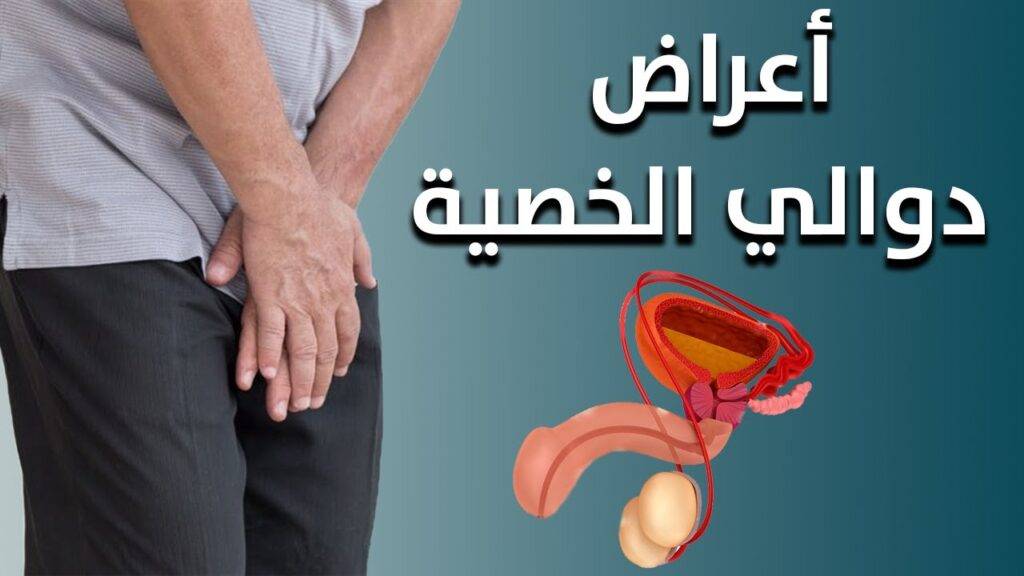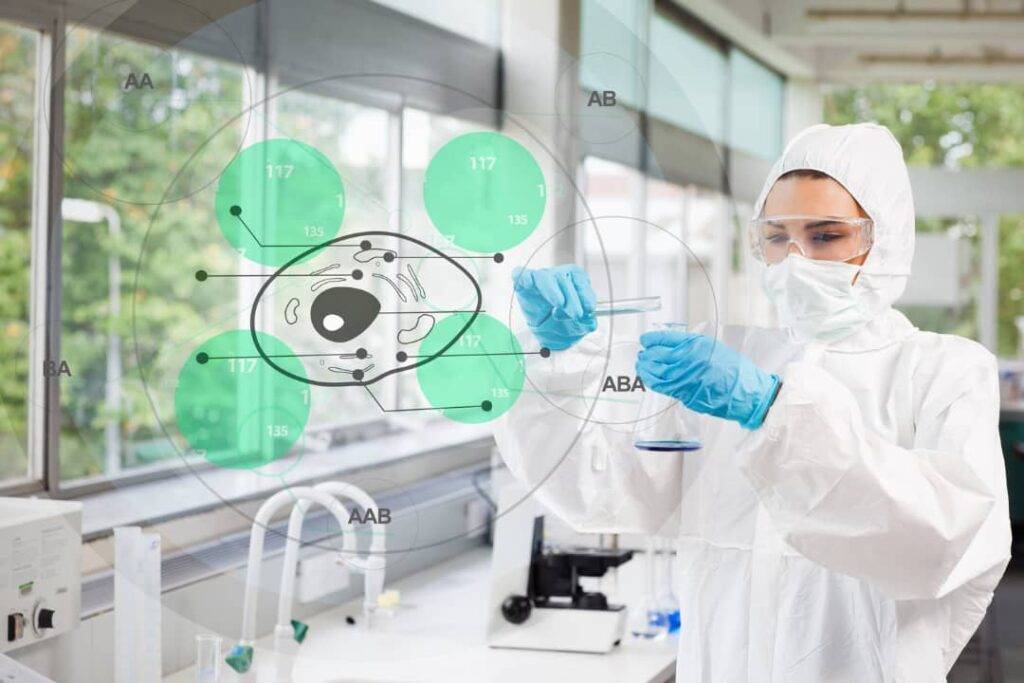In this practical article, we will describe the topic of eye injections for diabetics in full and detail, and we will explain to you, dear ones, the important things about it. Dear friends, we invite you to stay with us until the end of this article.

Table of Contents
Most people, when faced with an illness or complication, look for ways to treat the illness.
- Intraocular injection.
- How does an injection into the eye of a diabetic patient lead to treatment?
- The most important medications used in the VEGF injection method.
- What happens in this eye injection procedure?
- Method of injection into the eye and its side effects.
- The duration of this treatment method [injection into the eye].
- The duration of this treatment method [injection into the eye].
- Patients suffering from macular degeneration.
- Patients suffering from macular edema.
- People with diabetic retinopathy.
- People who suffer from uveitis.
- People who suffer from retinal vessel occlusion.
- People suffering from endophthalmitis.
- When is an injection performed in the eye of a diabetic patient?
- Conducting checks and reviews at intervals of time.
- The most important treatment methods used for this condition [eye diseases and problems in diabetes].
- Things that diabetics should follow to reduce the risk of developing these complications.
- The number of injection times and the time of injection into the eyes of a diabetic patient.
- Conditions related to the injection of Avastin and other medications into the diabetic eye.
- Measures before injection into the eye of a diabetic patient.
- Cause of a feeling of pressure in the eye after intraocular injection in a diabetic patient.
- What resources should be noted after performing an injection into the eye of a diabetic patient?
- Is it possible to repeat the injection into the eye of a person with shingles several times?
- How long does the bandage last after injection into the eye of a diabetic patient?
- After an injection into the eye of a diabetic patient, under what circumstances should one go to an emergency room?
- How do we use prescribed eye drops after Avastin injection?
- Do you know how diabetes and its related types can affect the visual system and vision condition in people?
- When noticing any complications in the eyes, should diabetics see a doctor as soon as possible?
- Regular examination for eye problems related to diabetes.
- Sources.
Introduction:
One of the most important and advanced developments in ophthalmology in the last decade. Intraocular injection is used in diseases of the cornea and retina caused by diabetes, blood pressure, blocked blood vessels, swelling of the retina, and where there is dilatation of blood vessels, such as macular problems, it is effective.
This injection is performed by an ophthalmologist, surgeon and ophthalmologist. Iran, especially the city of Shiraz, is famous for having ophthalmologists who are experts in this field.
1. Intraocular injection
One of the methods of monitoring and treatment that is performed in the field of diabetes and its types is intraocular injections, which are known as diabetic eye injections in reference to diabetes.
Of course, in some diseases and other cases, doctors use injections into the eyes, and this problem is not limited to diabetes and its types only. In general, we should tell you that diabetic eye injection is one type of intraocular injection to control and manage diabetes.
2. How does an injection into the eye of a diabetic patient lead to treatment?
When diabetic eye complications are in their advanced stages, they use a treatment and injection method called VEGF to control and treat them. The substance we mentioned here is injected directly into the patient’s eye.
This substance and this injection method prevent the formation of more blood vessels in the back of the subject’s eye.
3. The most important medications used in the VEGF injection method
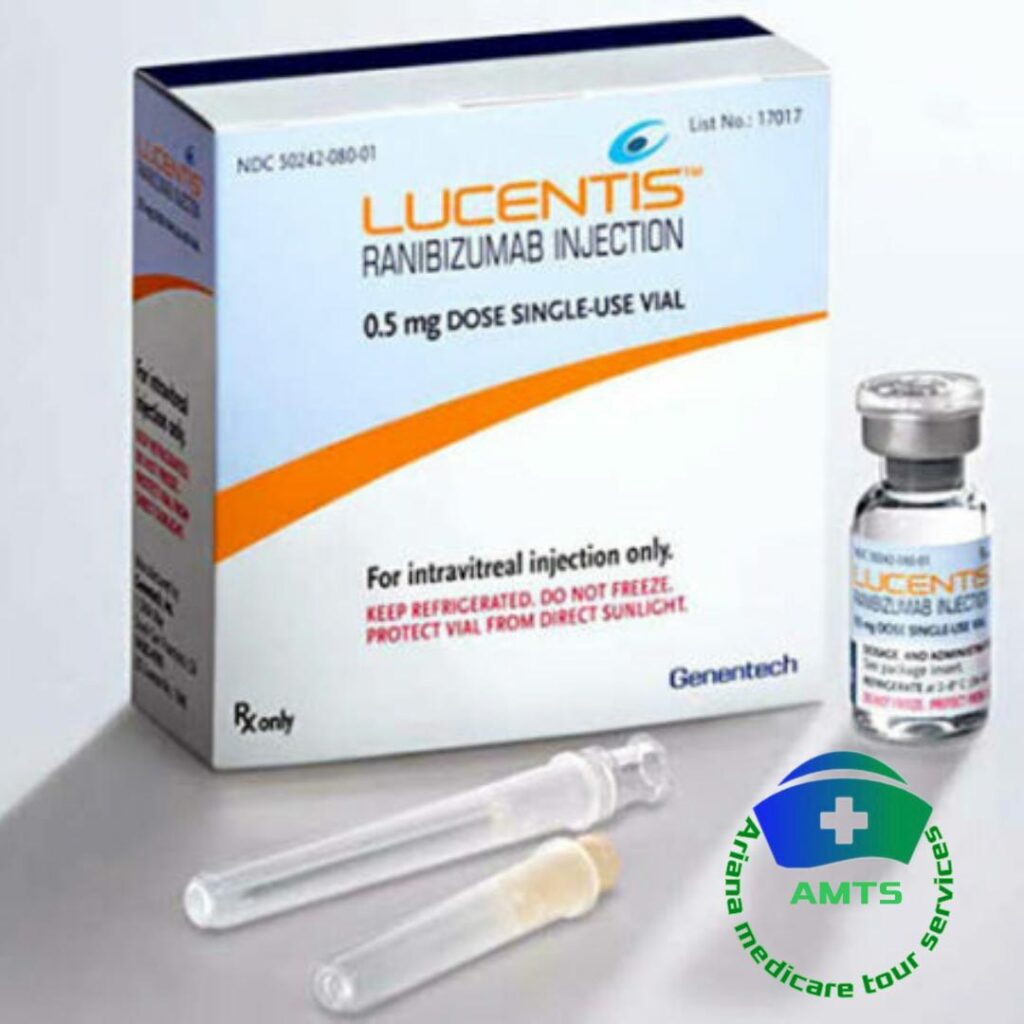
The most important medications used in the VEGF injection method are the following:
- Avastin injection.
- Elijah injection.
- Lucentis injection.
- Ranibizumab injection.
- Aflibercept injection
When a person injects these medical materials into his eyes, the condition and quality of his vision improves, of course. This means that the person’s vision improves over time and gradually.
4.What happens in this eye injection procedure?
With the help of very fine needles, some medicines and therapeutic substances are injected into the eyes of the target person. This injection is done into the person’s eyeball.
In this procedure, the doctor injects a certain amount of medicine into the part of the eye near the retina and in the back of the eye. The primary purpose of this injection and introduction of medications into the eye is to control vision problems that a person suffers from due to various reasons and to protect the eye type of the person concerned.
5. Method of injection into the eye and its side effects

The method of injection into the eye is one of the well-known and traditional methods, which also has very good safety.
Mostly, this method of treatment (injection into the eye) has no special complications and has unpleasant consequences.
6. The time period for this treatment method
The time allotted for this treatment ranges from 15 to 30 minutes. This is done as follows:
In order for the treated person to enjoy more peace and comfort during the injection into the eye, at the beginning of this procedure, a few drops are used to numb the eye.
Next, the patient should be placed in a comfortable and comfortable position.
The surface of the eye as well as the eyelids of the subject are cleaned. This procedure is done with the help of antiseptic solutions.
During the injection into the eye, the person’s eyelids must be kept open, and a small device is used for this purpose.
In this part, the doctor asks the treating person to look at the opposite eye (the eye that is not being injected).
At this stage, the injection is made into the patient’s eye.
7. Diabetics who need eye injections
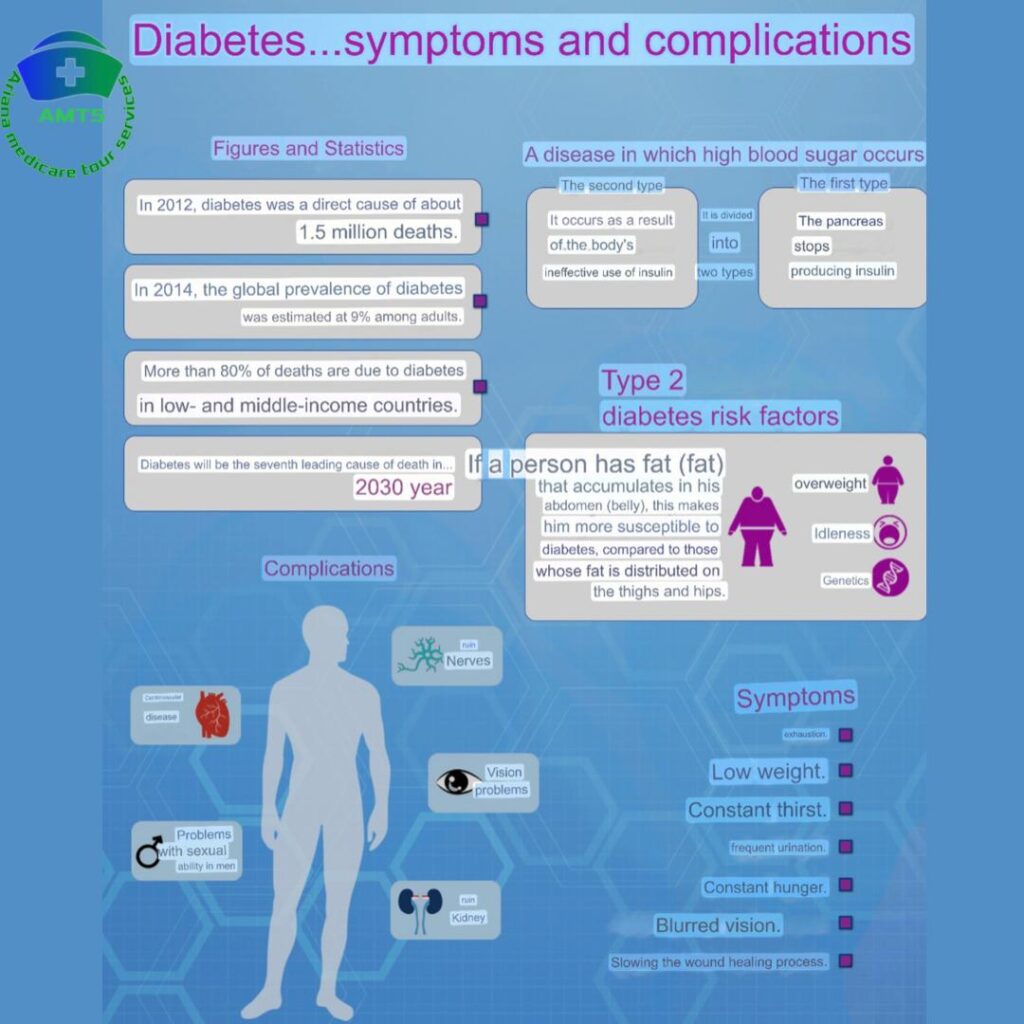
The most important groups that need injections into their eyes are:
Patients with macular degeneration:
This complication is an important disturbance in a person’s vision, and if not treated in time, it will gradually spread and destroy the central vision of the person concerned.
Patients with macular edema:
This disease can cause swelling or thickening of the macula and destroy the target person’s central vision.
People with diabetic retinopathy:
This disease is common in people who suffer from uncontrolled diabetes. As a result of this condition, new blood vessels are created and the person’s retina no longer regains its previous efficiency.
People with uveitis:
This disease causes swelling and inflammation of the inner parts of the eye.
People who suffer from retinal vascular occlusion:
In this condition, the vessels that carry blood from outside the eye to the retina become blocked.
People with endophthalmitis:
This complication is actually an infection inside the eye that can cause problems with people’s vision.
8. When is an injection performed in the eye of a diabetic patient?
One condition in which a person needs intraocular injections is diabetic retinopathy. When these complications progress and enter advanced stages, the eye of the person concerned will require care and treatment measures.
In this case, the person’s eyes are also exposed to important risks and the attitude of care and treatment at this stage is of particular importance.
9. Conduct checks and reviews at intervals of time
If you or someone else has one of the types of diabetes, you should pay attention that in order to treat, control and better manage this condition, one of the most important measures is to carry out examinations and investigations at intervals of time. . He is
If the complications we mentioned above under the name of diabetic retinopathy are in their initial stages, the concerned person can prevent various problems with his vision with timely treatment.
But when these complications are accompanied by further developments, a person’s vision is exposed to serious risks. In this case, the person suffers from a complication called diabetic eye.
10. The most important treatment methods used for this condition [eye diseases and problems in diabetes]
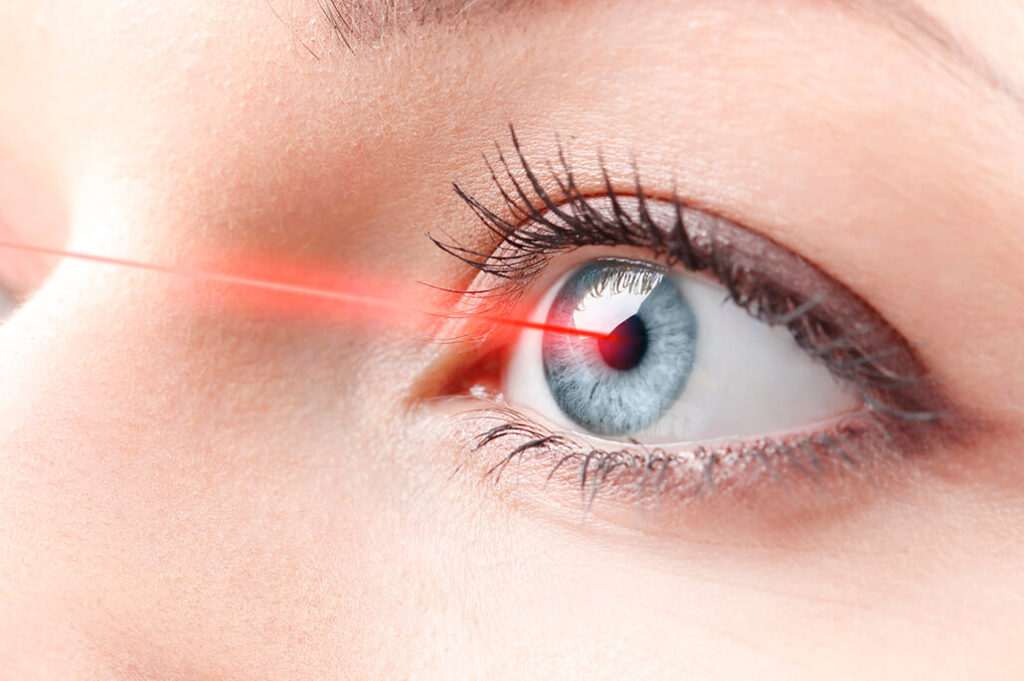
The most important treatment methods used for this condition are as follows:
- Laser treatment method for the retina.
- Injection into the eye of a diabetic patient.
- Performing surgery on a person’s eye.
Of course, this method is used if the person concerned does not get a good result from methods such as laser treatment, or when the disease is in its advanced stages.
11. Things that diabetics should follow to reduce the risk of developing these complications
It is necessary for these people to consider the following:
- They should always check their blood sugar levels.
- Blood pressure and cholesterol levels should always be controlled in this group of people.
12. The number of times and time of injection into the eyes of a diabetic patient
It is necessary to perform an injection in the eye of a diabetic patient at least once a month, and to repeat this procedure monthly. Of course, after a period of time when the person’s vision conditions improve and the severity of diabetic eye complications decreases, the amount of injection in the diabetic patient’s eye decreases. The number of repeated injections into the eye of a diabetic patient will be less for the target person.
13. Cases related to the injection of Avastin and other medications into the diabetic eye
The most important medical materials used in this type of treatment are the following:
- Types of antibiotics.
- Types of anti-inflammatories.
- Avastin medication
14. Pre-injection measures into the eye of a diabetic patient
Among the most important procedures that the concerned person must take before injecting into the eye of a diabetic patient are the following:
It is best for the person concerned to take a shower the night before the injection into the eye of a diabetic patient.
On the day he is supposed to give the eye injection to a diabetic patient, he should eat enough of his usual breakfast and lunch, as is the case on other days.
15. The reason for the feeling of pressure in the eye of a diabetic patient after an intraocular injection in a diabetic patient
You may only feel pressure in your eyes for a short moment, which is completely fleeting and temporary and will pass very soon. This is because the medicine enters the eye, so do not make yourself afraid and nervous.
16. What are the resources that should be noted after performing an injection into the eye of a diabetic patient?
The positive results and effects obtained from intraocular injections depend on the type of intraocular problem you are experiencing.
It is possible for the person to be injected into the eye several times and must be repeated.
Depending on the person’s condition and based on the doctor’s diagnosis and prescription, other medications can be injected except Avastin. This matter depends entirely on the opinion of the specialist doctor as he examines the person’s eye condition.
In some cases, it is possible that after completing the injection into the eye of a diabetic patient, the person concerned may see different objects in a suspended state. In this case, we have to tell you that there is no reason to worry. This problem is completely temporary.
17. Is it possible to repeat the injection into the eye of a person with diabetes several times?

Depending on the condition of a person’s retina, the injection into the person’s eye may be done several times and must be repeated.
18. How long does the bandage last after the injection into the eye of a diabetic patient?
After the injection into the eye of a diabetic patient, the doctor also bandages the person’s eye. This bandage should remain on the person’s eye for about two hours after which it should be removed and no longer needed.
19. After an injection into the eye of a diabetic patient, under what circumstances should one go to the eye emergency?
The most important cases that require immediate referral to emergency ophthalmology after injection into the eye of a diabetic patient are:
- When a person suffers from a severe decline in his vision system.
- Watching the symptoms associated with infection in the eyes of a diabetic patient are:
- Intense red color inside the eye for a long time, severe pain and inflammation, any purulent discharge coming from inside the person’s eye, temperature higher than 38 degrees Celsius) and…
- When a person suffers from a type of headache that cannot be relieved with the types of painkillers prescribed by the doctor. Especially when the headache is accompanied by nausea and vomiting
20. How do we use prescribed eye drops after Avastin injection?

- It is best to use the prescribed drops at specific times determined by the doctor.
- Each opened drop is stored at a temperature between 25 and 30 degrees Celsius. You are Hungarian, finally use these drops for 21 days (3 weeks) and after the end of this period you must dispose of them and if necessary buy new, unopened drops.
- Drops should not be applied in extreme heat and high temperature.
- The drops must not be placed in very hot or high temperature places, and they must be prevented from freezing.
- To use these drops, you must first wash your hands with soap and water.
- Keep your head back slightly and with the help of your fingers pull your lower eyelid down to create a hole-like condition.
In this case, you can pour a drop into the placed hole.
- Keep your eyes closed for 2-3 minutes.
- After instilling the drops in each eye, it is necessary to keep your eyes closed for 2-3 minutes, and it is sufficient to do this slowly and without pressure.
In this case, the condition of the medication and drops required will improve and the side effects will also decrease.
- In cases where this is necessary, use two different eye drops, preferably leaving at least 5 minutes between applications.
21. Do you know how diabetes and its related types can affect the visual system and the state of vision in people?
The retina needs a blood supply to be able to do its job permanently and properly. The blood needed for the retina is supplied by small blood vessels found in the network in the eye.
If a person’s blood sugar level is at a high level for a long time and almost always, these blood vessels become damaged. Vascular injuries usually go through three stages:
- In the initial stage, a number of swellings occur in the blood vessels, which of course may turn into bleeding. At this stage, the vision condition of the concerned person is not affected and the person does not face any vision problem.
- The next step is that the severity of the changes increases and the blood vessels in the retina and eye area face greater damage. At this stage, the severity of intraocular bleeding is greater and is referred to as preproliferative retinopathy, and its specialized title is preproliferative retinopathy.
- Finally, in the third step, the amount of wounded tissue and weak blood vessels inside the eye increases and these blood vessels simply bleed. Here, the eye of the person concerned has entered a stage called proliferative retinopathy, which is professionally called proliferative retinopathy for this condition. This is the stage that can lead to blindness in some cases if not dealt with and treated in a timely manner.
22. When they notice any complications in the eyes of diabetic patients, they should see a doctor as soon as possible?
- When a person suffers from a gradual decline in his visual system.
- When a person sees moving spots in front of his eyes.
- Having blurry vision.
- If a person feels pain in his eyes or there is redness in his eyes.
23. Periodic examination for eye problems related to diabetes
One of the points that should be mentioned in this section is that all people over the age of 12 who have one type of diabetes should undergo examination at least once a year, and should see a skilled ophthalmologist.
Important note:
area, be sure to contact a skilled ophthalmologist and have an annual examination because many eye problems occur slowly and when you realize that their function has deteriorated and the disease has progressed and treatment has become difficult and perhaps impossible. Our consultants are at your service 24 hours a day.
24. Sources
Senger, D.; Galli, S.; Dvorak, A.; Perruzzi, C.; Harvey, V.; Dvorak, H. (25 February 1983). “Tumor cells secrete a vascular permeability factor that promotes accumulation of ascites fluid”. Science. 219 (4587): 983–985. Bibcode:1983Sci…219..983S. doi:10.1126/science.6823562. PMID 6823562.
Palmer, Biff F.; Clegg, Deborah J. (2014). “Oxygen sensing and metabolic homeostasis”. Molecular and Cellular Endocrinology. 397 (1–2): 51–57. doi:10.1016/j.mce.2014.08.001. PMID 25132648. S2CID 5165215.
Cooper, Mark; Vranes, Dimitria; Youssef, Sherif; Stacker, Steven A.; Cox, Alison J.; Rizkalla, Bishoy; Casley, David J.; Bach, Leon A.; Kelly, Darren J.; Gilbert, Richard E. (November 1999). “Increased Renal Expression of Vascular Endothelial Growth Factor (VEGF) and Its Receptor VEGFR-2 in Experimental Diabetes”. Diabetes. 48 (11): 2229–2239. doi:10.2337/diabetes.

